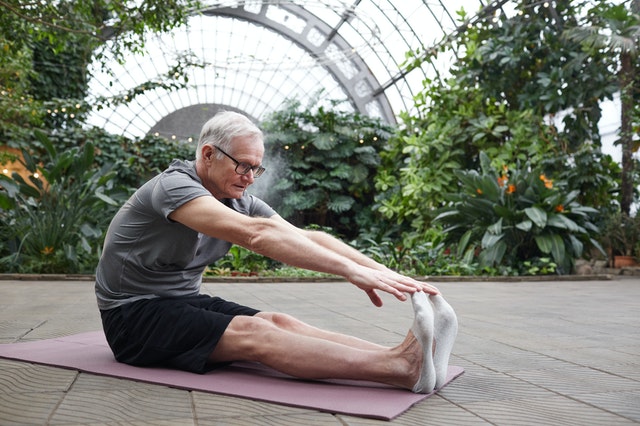Have you ever observed your own actions with every minute detail? Did you ever watch your own thoughts and some functions of your body? If yes, then you have used Mindfulness. If you see the life of any great personality, you will know they are mostly mindful. They exactly know what they are doing in life.
This is a great barrier in the life of most people. They just don’t know what they want in life. So to avoid this condition, we must follow Mindfulness.
Mindfulness is a technique that you use purposely to focus your attention on the present moments and accept them without thinking about them. Almost all the activities of life can be felt with Mindfulness.
There are 3 key features of Mindfulness.
1. Purpose
Mindfulness involves purposeful involvement of your attention to your actions rather than letting them wander.
2. Presence
Mindfulness requires your full presence in the present moment. You must focus on the present moment rather than thinking about the past or future.
3. Acceptance
Mindfulness means acceptance of thoughts, actions etc without being judgmental. You allow them to pass and don’t label them either bad or good. Just be patient and let it give and accept them in full.
Benefits Of Mindfulness
Mindfulness is a mind-body activity, so we have physical and psychological benefits from it. The primary benefit that occurs to you is having increased awareness of your every action, thoughts & feeling.
You must have felt very angry sometimes in your life and said a lot of things that you don’t mean it. Also, you did some terribly wrong things in life that you never intended to do. These situations arise because of your less or no control over your mind and body. So with Mindfulness, you can control such situations in life.
There are 3 types of benefits of Mindfulness.
1. Psychological Benefits
- Increased awareness
- Control over stress, anxiety and negative emotions
- Increased control over ruminative thinking
- Enhanced mental ability and focus
- Improvement in memory
- Less distraction of thoughts
- Decrease in emotional reactivity
- Increase in responsive behaviour
- Enhancement in empathy, compassion, and conscientiousness of other’s emotions
2. Physiological Benefits
- Improved immune system functioning
- Improved brain density and neural integration that is mainly responsible for positive thoughts in life.
- Lowered blood pressure
- Lowered levels of blood cortisol (a primary stress hormone)
- Control over heart disease
3. Spiritual Benefits
- Improvement in Self-insight and Self-acceptance
- Increased acceptance of otherscreasde
- Enhancement in compassion and empathy
- Improvement in sense of morality, intuition and courage to change
- Increased control over automatic behaviours
- Increased self-discipline
How To Start Mindfulness
Mindfulness is not difficult but remembering to be mindful. Any activity of your life can be a mindful activity if it contains the following basic component:-
1. If one or more senses are involved
If you involve one or more senses in your activity then your awareness level is high. You can have a better view of that activity and can achieve mindfulness in a better way.
Though your ultimate goal is to use all your senses, you can start with one or two senses. And gradually you can include all the senses.
2. An “anchor”
It is basically an object of attention. Suppose you want to concentrate on drinking water. Then you can feel each drop of water through your mouth. You can imagine how it is going to satisfy your body and soul. Each drop has a nourishing effect on your body.
There are endless things which can be your anchor you just need to experiment and practice.
3. Returning to the anchor
This is the major area of work in mindfulness as keeping yourself focused on your anchor may not be possible initially. It is very much possible that you lose control of your anchor and that’s perfectly normal.
When you realize that you lost control of your anchor. Then gently refocus your attention on the anchor.
But, to make yourself capable of returning to your anchor is what you need to practice. And that will come by practice and practice only. With time, you will be able to concentrate for a longer time.
There are two common practices of Mindfulness
1. Mindful Breathing(Formal Seated Breath Meditation)
- Posture: You can take any comfortable position for meditation. Whether you are sitting on the floor or on a chair, it doesn’t matter. The only condition is a comfortable position. After that keep your eyes closed so that you can avoid any distractions.
- Getting Relaxed And Grounded: Once you are in the proper posture. Initially, there may be body aches or some kind of strain in the body. So keep yourself grounded for a while and make yourself ready again. You can make yourself relaxed through some relaxation music.
- Concentrate On Your Breathing: Once you are in the proper position. The next step is to concentrate on your breathing. Watch every breath with complete mindfulness. Concentrate on how you inhale and how you exhale with full mindfulness. There may be some difficulty in the beginning but by that time you will be comfortable. So do practice daily.
2. Mindful Walking
- Posture: Stand straight and alert but don’t put so much pressure on your body. Try to distribute your weight evenly on both feet and feel your steps on the ground.
- Select a path: Select a particular path for mindful walking. Start with a shorter path maybe 100 meters. And walk back and forth. You can increase the path length once you attain some practice.
- Walking: As you start walking, feel each step. How do you put your feet on the ground, how heavy your feet are? Try to feel all these things while walking.
- Staying With The Steps: When you are walking, just try to feel the sensation of your feet with every step. It is possible to lose your attention. So in that case gently bring back your attention to your feet. Once again you should focus on mindfulness as after a while you can forget to have mindfulness.
So How Much You Should Do It Daily?
In the research, it is found that if you do it for as less as 10-15 minutes on daily basis. It will be a good start and provides better results. The main thing is you need to do it consistently. In a few weeks, you will see the result. You will start feeling calmer and more peaceful inside.

